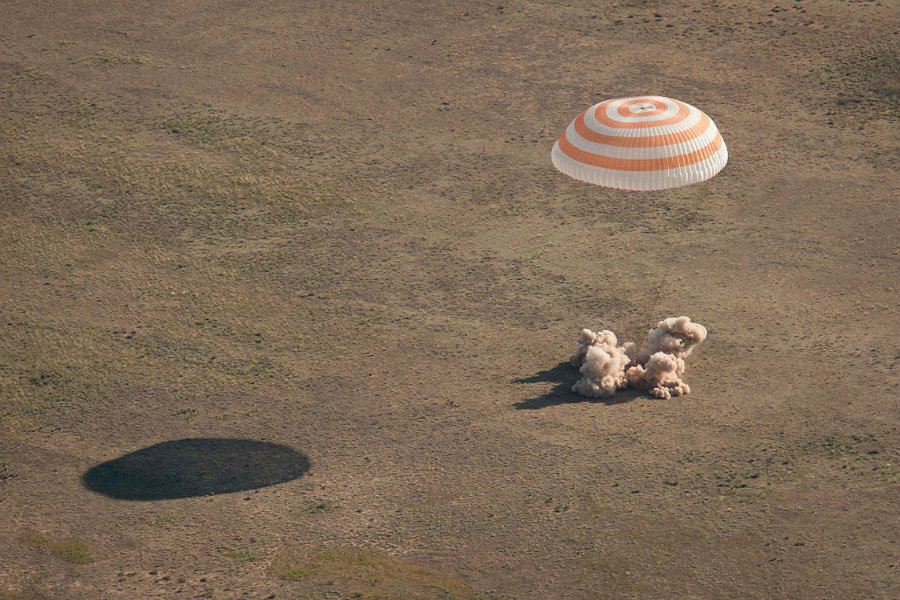After six months in orbit at the International Space Station (ISS) conducting various experiments, three crew members, an American astronaut and two Russians cosmonauts, have returned to Earth on Wednesday. They landed in Kazakhstan on a warm, cloudless morning just little less than thirty minutes after sunrise, at 7:13 a.m. local time.
The landing went smoothly, with NASA spokesman Dan Huot calling it “picturesque.” The trio was greeted with pleasant weather, at about 19 degrees Celsius, and all three astronauts arrived safely. Approximately three hours before landing, at 5:51 p.m., the crew members had undocked from the International Space Station’s upper Poisk module, and the capsule made a perfect landing, with the large orange and white parachute being assisted by the engines to slow down the descent of the Russian Soyuz capsule. Another NASA spokesman, Rob Navias, notes that everything went “very normally.”

The landing went smoothly, with NASA spokesman Dan Huot calling it “picturesque.” Photo credit: Spacefacts.de
The capsule landed sideways, as it usually happens, but Russian recovery crews nearby were quick to set the Soyuz spacecraft upright and help the astronauts out of their small, cramped craft.
The American astronaut, Jeff Williams of NASA, broke the U.S. record for longest cumulative time in orbit, with 534 days in orbit over the course of four missions, beating previous American record holder Scott Kelly; this makes him America’s most experienced astronaut and the 14th overall. The world record holder is the Russian Gennady Padalka, with 879 days, and other thirteen Russians have spent more time than Williams in space. The Russian Aleksey Ovchinin just completed his first space flight, spending 172 days in space; his companion Oleg Skripochka has spent 331 days in space.
The trio sat on chairs outside the capsule, surrounded by recovery crew members. They were in a good mood, happy to have successfully returned home, and found in good health. Williams was wearing a black baseball cap, Ovchinin was holding a doll given to him by his daughter as a gift to keep him company in space, and Skripochka sat happily along with them.
The astronauts were later taken to a medical tent to receive routine tests to check how well they adjust to gravity back on Earth. The three men haven’t experienced gravity in roughly six months. All three astronauts orbited Earth, circling the planet about 2,752 times for a total of 72.8 million miles.
Testing expandable habitats
The capsule brought back air samples from the first inflatable module used in orbit: the Bigelow Expandable Activity Module (BEAM). This expandable habitat arrived on the International Space Station on April 10, 2016, and will remain from 2016 to 2018 for testing purposes. On June 6, 2016, both Williams and Skripochka entered the BEAM to collect the air samples.
Its purpose is to help with the development of expandable habitats to be used for both deep space travels and the coming-closer trip to Mars.
Proper reception: Welcome home party at Karaganda
The official welcoming ceremony was held later in the day. The trio was flown to Karaganda via helicopter, and afterward, Williams returned home to Houston in a NASA jet. Skripochka and Ovchinin were set to travel to a location near Moscow to meet their families. The crew initially launched to the International Space Station on March 18, 2016.
“This is a very significant time, in my opinion, in the life of the space station, going into the full utilization mode, being the orbiting laboratory we’ve always said it was going to be,” said Williams earlier this week.
Source: Washington Post
